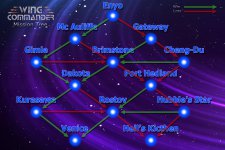JohnnFour
Game Master
Staff member
Adamantium WoA
Wizard of Story
Wizard of Combat
Gamer Lifestyle
Demonplague Author
Borderland Explorer
I have a plotline built out in CL using Mermaid. The code is below. I've also added this to my Templates for the Generator Service. If you want the Generator Service code, let me know.


Code:
```mermaid
---
title: Plotline
---
classDiagram
class 5RD 1{
Feature Location: Location
Feature Creature : Conflict
Feature Treasure : Stakes
}
class 5RD 2{
Map : Location
Monster : Conflict
Chest: Stakes
5RD 2A(MMC)
5RD 2B(MMC)
5RD 2C(MMC)
5RD 2D(MMC)
5RD 2E(MMC)
}
class 5RD 3{
Map : Location
Monster : Conflict
Chest: Stakes
5RD 3A(MMC)
5RD 3B(MMC)
5RD 3C(MMC)
5RD 3D(MMC)
5RD 3E(MMC)
}
class 5RD 4{
Map : Location
Monster : Conflict
Chest: Stakes
5RD 4A(MMC)
5RD 4B(MMC)
5RD 4C(MMC)
5RD 4D(MMC)
5RD 4E(MMC)
}
class 5RD 5{
Map : Location
Monster : Conflict
Chest: Stakes
5RD 5A(MMC)
5RD 5B(MMC)
5RD 5C(MMC)
5RD 5D(MMC)
5RD 5E(MMC)
}
class 5RD 6{
Map : Location
Monster : Conflict
Chest: Stakes
5RD 6A(MMC)
5RD 6B(MMC)
5RD 6C(MMC)
5RD 6D(MMC)
5RD 6E(MMC)
}
5RD 1 --|> 5RD 2 : Hook
5RD 1 --|> 5RD 3 : Hook
5RD 1 --|> 5RD 4 : Hook
5RD 1 --|> 5RD 5 : Hook
5RD 1 --|> 5RD 6 : Hook
```

